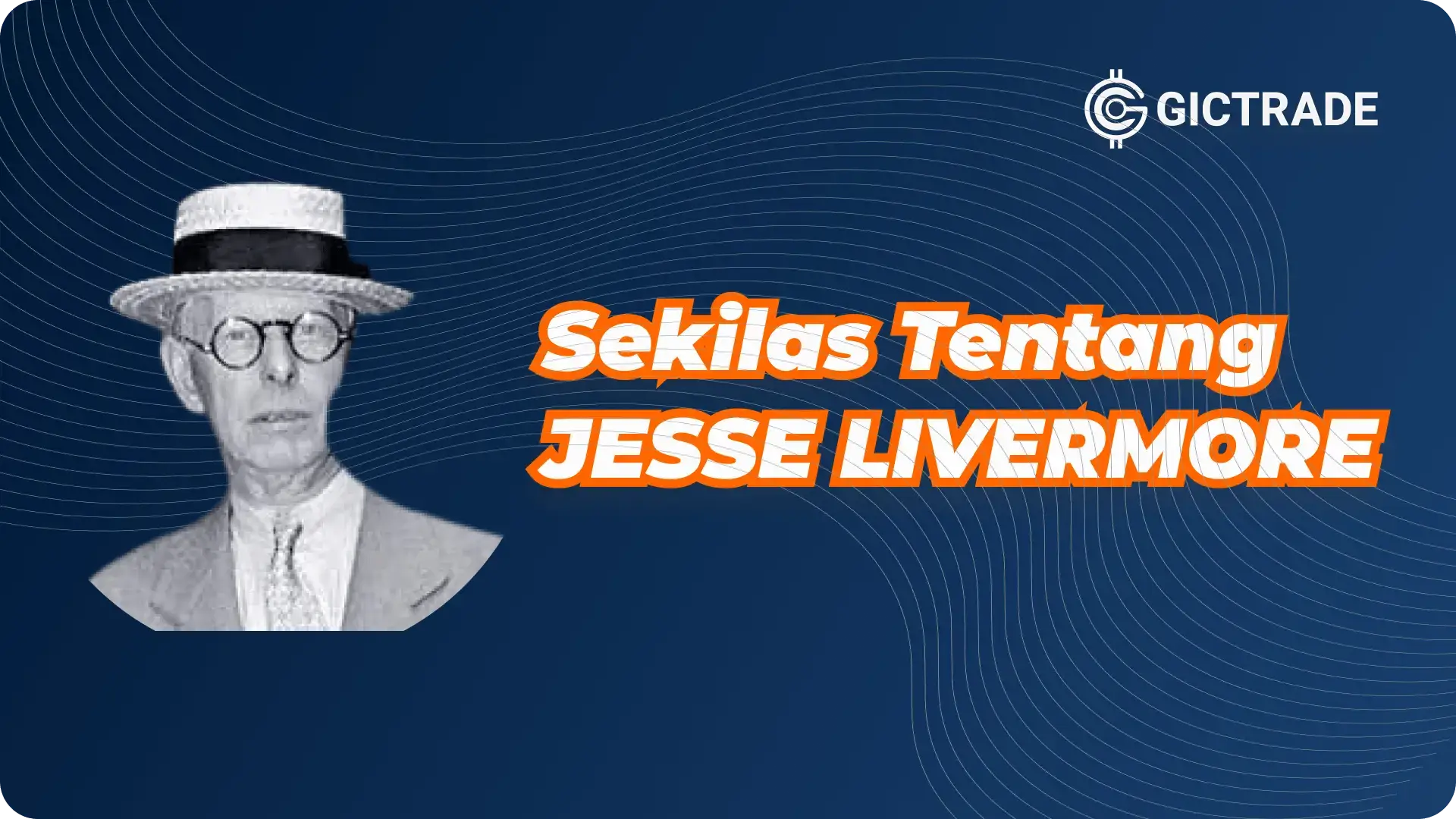Jesse Livermore Bio
Jesse Livermore is the most famous trader of modern times. Like most famous traders, he is best known for his great calling, shortening the stock market before the Panic of 1907 and the Great Depression of 1929. Livermore is the subject of Edward Levefre's partially fiction novel, Reminiscences of a Stock Operator, which is pretty much the bible of traders. Livermore was gifted with numbers and wanted a life outside the farm where his family grew up and worked, but his father had other plans. He wants Jesse to work on the family farm, not allowing him to pursue a career. In her early teens, Jesse's mother helped her escape from home for just $5. Livermore has been on its own since then. Largely due to luck, Livermore's first job was operating a ticker tape for a local brokerage firm. While working on this job, he writes down the price patterns he notices in the ledger and gains the confidence to risk real money. Because he was too young to open a real brokerage account, he started trading in local "bucket shops". Imagine a bucket shop as an old-school version of a scam offshore Forex broker. There is no real liquidity, you trade against the house, and there are large spreads. There are no exchanges that guarantee your position and there is almost no recourse at all if you fail. Trading is pretty much a zero-sum game, but it seems impossible to make a profit when you add friction like this. However, Livermore was so adept at spotting and executing price patterns that he was blacklisted from almost every American bucket store, forcing him to pass through town. After graduating from the bucket shop to Wall Street, Livermore had a difficult start adjusting to real-time stock prices instead of the "declared quotes" that bucket shops would post on bulletin boards. Because of this, he adjusts his trading style to hold trades longer. What he used to hold on to for a few minutes or hours, he began to hold it for days, weeks, or months.Get to Know the Richest Investors in Indonesia and the World!
Jesse Livermore Biography
Jesse L. Livermore was born in South Acton, Massachusetts, in 1877. Livermore made and lost four stock market fortunes during his career. Livermore ran away from home in 1891 at the age of 14, with little money, and soon began working in the offices of Paine Webber Brokerage in Boston. Its task is to put stock and commodity prices on the broker's price quote chalk board. He studied the price movements and started trading their price fluctuations. In his twenties, Livermore moved to New York City to speculate in the stock and commodity markets. He made so much money that he was banned from Bucket Shops in Boston and New York. In the Rich Man's Panic of 1907, J.P. Morgan, acting as America's de facto central banker, personally pleaded with Livermore to stop selling. He made 3 million dollars in one day during the panic. This led to him being known as the Great Bear. In 1919 President Woodrow Wilson invited Livermore to the White House to request that he open a corner of the successful (and at the time, legal) cotton market, for the welfare of the nation. Livermore sold the stock market shortly before the crash of 1929, and entered the depression with $100 million in cash. He works in a luxury mahogany-paneled penthouse office on Fifth Avenue. Four to six assistants continue to track the price movements of Livermore's leadership stock on the green chalk board. Once the market opened, no one in the office was allowed to speak until the market closed. Information from the Exchange's floor was transmitted via a direct telephone line to the people of the Livermore board, giving it a 15-minute advantage over the ticker band. Livermore sends its orders through 50, sometimes up to 100, brokers to hide its massive movements and positions. While Livermore never uses charts in its trading, its approach to trading is technical. The first of his three bankruptcies was due to the purely fundamental cotton trade and since then he has relied on market price action to confirm any opinion. Livermore, during its period of success, enjoyed a luxurious lifestyle; Deep Sea fishing aboard a 300-foot yacht with a crew of 14. He travels between New York and Palm Beach in a private train car. His friends included Charlie Chaplin, Walter P. Chrysler, T. Coleman Dupont and Alfred Sloan. He loved to gamble at Ed Bradley's illegal casino in Palm Beach. He also enjoys grouse hunting with Bernard Baruch. His depressed personality and preoccupation with the market led to a deep dysfunction within his family. Livermore battled severe depression throughout his adult life, and tragically ended his own life at the Sherry Netherlands Hotel in New York in 1940. Reminiscences of a Stock Operator, is a disguised autobiography of Livermore that is now widely known as a true investment classic. His own book, How to Trade in Stocks, was first published in 1940.
He works in a luxury mahogany-paneled penthouse office on Fifth Avenue. Four to six assistants continue to track the price movements of Livermore's leadership stock on the green chalk board. Once the market opened, no one in the office was allowed to speak until the market closed. Information from the Exchange's floor was transmitted via a direct telephone line to the people of the Livermore board, giving it a 15-minute advantage over the ticker band. Livermore sends its orders through 50, sometimes up to 100, brokers to hide its massive movements and positions. While Livermore never uses charts in its trading, its approach to trading is technical. The first of his three bankruptcies was due to the purely fundamental cotton trade and since then he has relied on market price action to confirm any opinion. Livermore, during its period of success, enjoyed a luxurious lifestyle; Deep Sea fishing aboard a 300-foot yacht with a crew of 14. He travels between New York and Palm Beach in a private train car. His friends included Charlie Chaplin, Walter P. Chrysler, T. Coleman Dupont and Alfred Sloan. He loved to gamble at Ed Bradley's illegal casino in Palm Beach. He also enjoys grouse hunting with Bernard Baruch. His depressed personality and preoccupation with the market led to a deep dysfunction within his family. Livermore battled severe depression throughout his adult life, and tragically ended his own life at the Sherry Netherlands Hotel in New York in 1940. Reminiscences of a Stock Operator, is a disguised autobiography of Livermore that is now widely known as a true investment classic. His own book, How to Trade in Stocks, was first published in 1940.
Inspiring Stories of Successful Entrepreneurs from Indonesia and the World
Investments owned by Jesse Livermore
Even today, many stock and commodity traders are indebted to Jesse Livermore for sharing his experience. The techniques he published have survived for decades; His trading rules made millions of dollars, as long as he remained loyal to them. Livermore also lost his entire fortune on more than one occasion, when he ignored his trading rules. Jesse Livermore is an independent man who trades with his own money – not someone else's, such as modern investment banks and hedge funds. Depending on how you measure it, his wealth peaked between 1.1 and 14.0 billion dollars in money today.Stocks or Forex, Which is Better? Here's the Consideration
Jesse Livermore's Success Tips in the World of Stocks and Trading
Here are some tips for Jesse Livermore's success in the world of stocks and also trading that you can follow. The tips are:1. Buy Rising Stocks
Jesse Livermore once said that buy stocks that go up and sell stocks that go down. When the market moves in a certain direction, the majority of traders get an idea of where the stock will go. If the majority of them think that the stock price will do well and go higher, they will decide to buy it. This automatically creates an increase in price. Livermore suggests choosing higher-traded stocks. It is important to recognize if the stock is really profitable and line up early. You can get more benefits from this step.2. Plan ahead
Jesse Livermore says that only entering a trade after the market action confirms your opinion. Before entering the market, it is important to prepare a plan. You should have a list of reasons why you entered the market and also exited it. This requires a certain amount of research and good organizational skills. It should also be in line with your investment goals. Don't rush into the market to invest because it's trending. Observe the trends in the market and confirm your understanding. Always waiting for the market to expose itself.Learn Stocks for Beginners, Start from Zero!
3. Follow Profit
Jesse Livermore has always believed that it is important to end anything that indicates a loss. He once said that continue with traders who show profits, end trades that show losses. He suggests that it is always important to stick with the winners when it comes to the market. One of the biggest mistakes to make is to keep something that clearly shows a loss. If an investment shows a loss, sell it and the investment that shows a profit – keep it. Hope is not a strategy for financial markets. The validated research and opinion are. There is no guarantee that investment tips are 100% successful in the stock market. It's all about profits and as an investor, you have to follow that. A win percentage of less than 50% can also bring you great success.4. Don't Buy Stocks That Fall for Average Losses
If one of your investments shows a loss, pay attention to that. Livermore once said never average losses by, for example, buying more stocks that have fallen. You may think that the price will go up, but this will only end in a loss. Don't buy more falling stocks thinking the trend will change in the near future. There is no reason to hold or buy more stocks that have fallen in the market.5. Stay Away From Emotions
Jesse Livermore talks about how human emotions play a role in the stock market. He once rightly pointed out that the human emotional side of every person is the average investor's or speculator's greatest enemy. During times of panic, humans will inevitably feel panicked. But this can lead to a fall in terms of investment. In panic, we are often led to make irrational decisions and we may buy bad stocks or sell profitable stocks. It is important to always hold the most profitable stocks and not let emotions get in the way of your investment decisions.How to Read Bullish Stocks and What Are Their Characteristics
Wealth from Jesse Livermore
At the peak of his career in 1929, Jesse Livermore was worth at least $100 million. People sometimes ask how much is it worth in money today. As a rule of thumb, a dollar in 1929 was worth 10 to 100 times its value today – and Jesse's fortune would amount to between 1.1 and 14.0 billion dollars in today's money – a remarkable feat for a self-made stock and commodity trader. who trade with their own money, not someone else's money. To assess Jesse's wealth more scientifically, the measurement value calculator gives the following result for today's value of $100 million in 1929:- $1.27 billion using the Consumer Price Index
- $1.02 billion using GDP deflators
- $2.27 billion using consumer package value
- $3.89 billion using unskilled wages
- $5.51 billion using nominal GDP per capita
- $14 billion using the relative share of GDP

 Last:
Last: 







